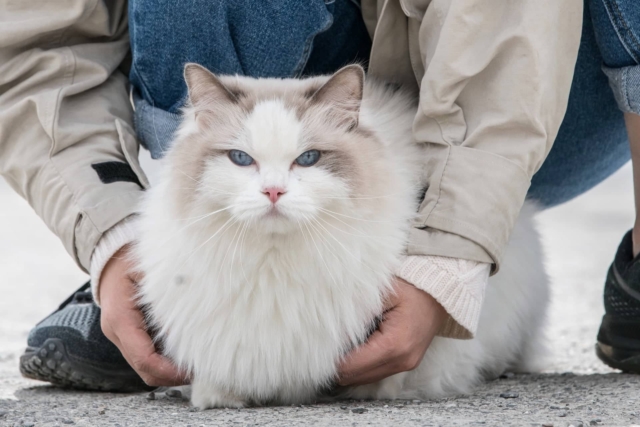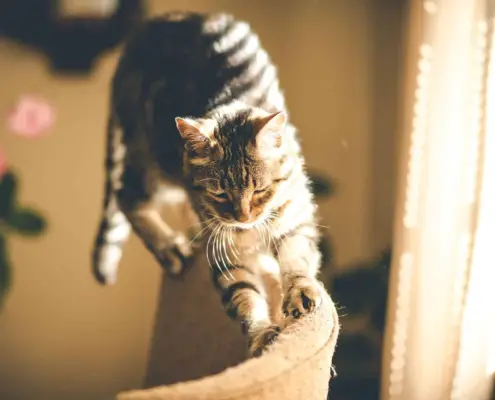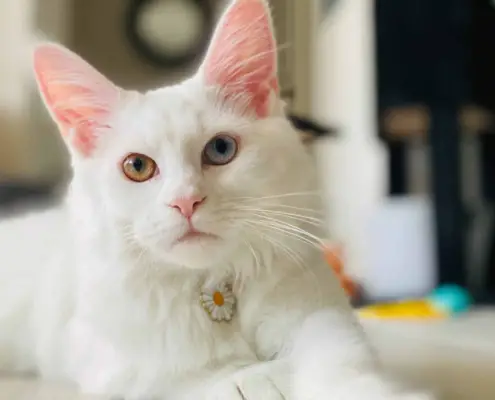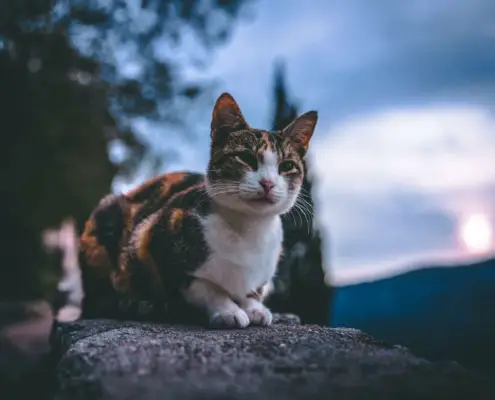
Cats have long been cherished companions to humans, providing comfort, companionship, and endless entertainment. The unique bond between humans and cats is a testament to the deep emotional connection that can form between different species. One question that often arises in the minds of cat owners is whether gender plays a role in a cat’s affection levels. In this article, we will delve into the intriguing world of cat behavior to explore whether male or female cats are more affectionate.
Understanding cat behavior and affection
To understand the impact of gender on a cat’s affection levels, it is essential to first gain insight into cat behavior and how they express affection. Cats are known for their independent nature, but they are also capable of forming strong emotional attachments to their human caregivers. Affectionate behaviors in cats can include gentle head bumps, purring, kneading, and rubbing against their owners. However, it is important to note that each cat is unique and may display affection in different ways.
Factors influencing a cat’s affection levels
While gender may be a factor in a cat’s behavior, it is not the sole determinant of their affection levels. Various other factors come into play, such as genetics, early socialization, and individual personality traits. It is widely believed that a cat’s early experiences, particularly during the critical period of socialization, can greatly influence their behavior and ability to form attachments. Cats that have been well-socialized from a young age are more likely to be affectionate and comfortable with human interactions, regardless of their gender.
Debunking the myths: Stereotypes about male and female cats
There are several stereotypes surrounding male and female cats that have led to misconceptions about their affection levels. One common belief is that male cats are more affectionate than their female counterparts. However, this is not necessarily true. While male cats may exhibit more attention-seeking behaviors, such as lap-sitting and cuddling, female cats can be equally loving and affectionate. It is important to remember that every cat is an individual, and generalizations based on gender may not hold true for all cats.
Male cats: Affectionate traits and behaviors
Male cats often exhibit affectionate behaviors that endear them to their human companions. They are known for their playful nature and are more likely to seek out physical contact with their owners. Male cats may enjoy being held and cuddled, often displaying a relaxed and contented demeanor when receiving affection. However, it is important to note that not all male cats are the same, and individual personality traits can vary greatly.
Female cats: Affectionate traits and behaviors
While male cats may steal the spotlight when it comes to affectionate behaviors, female cats can be equally loving and attentive. Female cats often express their affection through quieter gestures, such as gentle purring and head-butting. They may not be as overtly attention-seeking as male cats, but their love and loyalty are just as strong. Female cats are known for their independent streak, but they are also capable of forming deep emotional bonds with their human caregivers.
The role of socialization in a cat’s affection levels
Socialization plays a crucial role in a cat’s ability to form attachments and exhibit affectionate behaviors. Cats that have been exposed to positive experiences with humans and other animals during their early development stages are more likely to be sociable and affectionate. This socialization period typically occurs between two and seven weeks of age. By providing a nurturing and stimulating environment during this critical period, cat owners can help ensure that their feline companions grow up to be affectionate and well-adjusted adults.
Case studies and personal experiences: Male vs. female cats
Numerous case studies and personal experiences have shed light on the question of whether male or female cats are more affectionate. However, the results have been inconclusive, with individuals reporting both affectionate male and female cats. It is evident that the affection levels of cats are highly individual and can vary greatly depending on their unique personalities and life experiences. The important takeaway is that gender alone is not a reliable predictor of a cat’s affectionate nature.
Tips for building a strong bond with your cat, regardless of gender
Regardless of whether you have a male or female cat, there are several key strategies you can employ to build a strong bond and foster affectionate behaviors. Firstly, provide a safe and comfortable environment for your cat, with plenty of opportunities for mental and physical stimulation. Regular play sessions and interactive toys can help strengthen the bond between you and your feline companion. Additionally, be patient and understanding, allowing your cat to set the pace for physical contact and affection. Finally, create a routine of positive reinforcement, rewarding your cat with treats, praise, and affection when they display desired behaviors.
The complexity of cat behavior and the uniqueness of each individual cat
In conclusion, the question of whether gender impacts a cat’s affection levels is a complex one. While male cats may exhibit more attention-seeking behaviors, female cats can be equally affectionate. The crucial factors influencing a cat’s affection levels include genetics, early socialization, and individual personality traits. It is essential to remember that each cat is a unique individual, and generalizations based on gender may not hold true for all cats. By understanding and respecting your cat’s individual needs and preferences, you can build a strong and loving bond, regardless of their gender.
If you enjoyed my article, I would appreciate you sharing it with your network.

Sima Ndlebe
Sima writes for CatBuzz. He is interested in Cats, Health and Fitness, and Entrepreneurship.
Published: 17 November 2023



